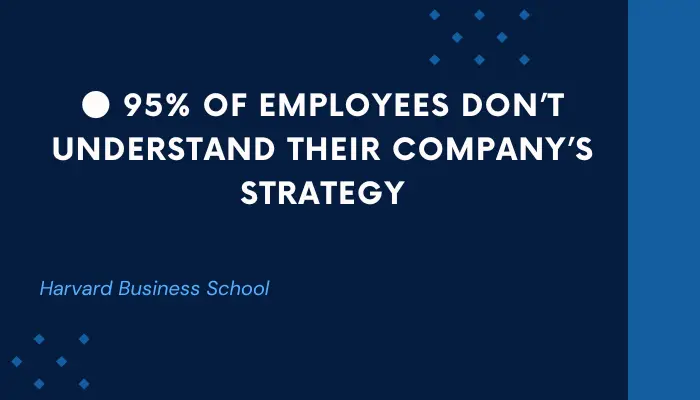we are going to discuss the meaning and concept of planning in detail, to understand the term planning let us first learn the meaning of the plan
What is the plan?
The plan is a framework as regards the list of steps to be followed with a proper timing sequence and resources to be used to achieve the desired objective, the plan is a result of the planning process.
What is Planning?
Planning is a systematic process of determining the right set of resources and steps required for the attainment of the organization’s objective, its mental process to decide what can be done in the future to be able to achieve goals efficiently.
In planning, we decide in the present about what will be done in the future
so what we do in planning is we think in advance about the future course of action to be followed
it is a systematic process of determining through the formulation of strategies the right set of resources and steps required for the attainment of the organization’s objective
To perform the process of planning requires the managers to be aware of the environmental conditions in which the organization operates as well as the planning function is executed after
Analyzing the past results and present situation of the form in a nutshell, the objectives are defined, and a course of action is determined to achieve those objectives
💡 Helpful Statistics About Planning: ● Companies with written business plans grow 30% faster. ● Businesses with a plan are far more likely to get funding than those that don’t have a plan. ● 67% of well-formulated strategies failed due to poor execution. (HBR) ● 60–90% of strategic plans never fully launch. ● 48% of leaders spend less than a day on strategy each month. (HBS) ● 95% of employees don’t understand their company’s strategy. (HBR) ● 61% of executives feel they are not prepared for the strategic challenges. (HBR) ● 77% of successful companies translate their strategy into operational terms and evaluate it on a day-to- day basis. (Palladium)

Table of Contents
Features of planning
after learning the definition and meaning, we can derive certain standard features of planning
Planning is goal-oriented
planning would be meaningless if there are no goals to achieve at the end; hence planning is a goal-oriented process that involves defining the objectives of the organization to achieving them in a timely and effectively
a sound planning process can help in prioritizing the objectives and achieving them easily
Planning is the primary function of management, planning acts as a base for the entire function of management; it lays the foundation of the process of management.
As to performing any activity, first of all, planning is undertaken. All management functions are interconnected in nature, and they are relevant to the firm.
Still, the other management functions can be performed only after the proper planning.
Planning is pervasive
This means that all the levels of management and departments of the organization require planning, so it is not limited to just one level or department of the concern
the top level management creates plans for the entire organization; such plans are long term
on the other hand, middle-level management makes a plan for their department, and such plans are for a year, half year, or quarter
lastly, the lower level management makes a plan for the section of the organization; such plans are for a very short period, that is, for the next day, week or month
so planning covers the entire organization, but the character and breadth of the planning differs according to the authority and nature of policies and plans
Planning is a mental exercise
Planning is more about thinking than doing; it requires rational and methodical review, intelligent imagination, foresight, deep analysis, and the ability to judge and decide further
it also requires the ability to take a peep into the future to anticipate future events with precision
Planning is a continuous process
Plans are developed for a certain period, say a month a year, and once that period is about to end a fresh plan is developed for the new term keeping in mind the environmental conditions past results present situations and the objective to be achieved in the future; hence it is a never-ending activity
Planning involves decision-making in planning various alternative courses of action are developed, and the best plan is selected out of the available options
It involves a complete examination and evaluation of each alternative and then picking the most suitable course of action
Planning is futuristic
Planning is a future-oriented activity it involves thinking beforehand and preparing for the future; it aims to determine the future events correctly and meet them effectively; it involves gathering relevant information and then selecting of course of action
But it is always based on experience and the current situation of the concern
Planning process
A planner has to formulate plans based on the current and projected situations both internal and external to the organization further based
Establishment of objectives
The first step in this process is the establishment of objectives. An organization prepares a plan for achieving objectives based on the firm’s strengths, weaknesses, opportunities, and threats.
Objectives are developed based on the company’s vision that is to be realized, and it must be realistic and feasible
Planning conditions
in nature, the next step in this process is the development of premises that are nothing but the planning conditions
whatever plans are made by an organization, they are based on certain assumptions, estimates, or projections relating to the future happening of the events
These premises represent the flow or trend of the different variables during the period.
They are of two types external planning premises and internal planning premises.
External premises may include government policies, demographic factors, demand forecasting, technological factors, competition, etc.
whereas internal premises include resource abilities, sales forecasting, organizational structure, organizational rules, policies, etc
Identifying alternative courses of action
in this step, the possible and achievable courses of action are identified; an alternative refers to the different ways solutions, methods, or options that are used to achieve the particular objective
next, after the search and scrutiny of various alternatives, the next step is to evaluate the alternative
Evaluation of the alternatives
Wherein the planning team would try to find out the potential of each alternative in the achievement of the objective considering the resources and limiting factors
It is a fact that all the alternatives which are chosen must have their positives and negatives, which are analyzed in this step
The planner, that is, the manager has to evaluate each alternative and then decide which option is capable of working successfully the basis for controlling planning and controlling are interrelated activities
So as to determine its suitability as to demand profitability risk involved capital investment competition technology required etc
Plan selection
Next, once the evaluation of the alternatives is complete, the next step is to select the best course of action which provides the maximum benefit with minimum input
While selecting a suitable alternative, the managers must keep in mind their resource capacity and constraints
Further, a comparison is made among various alternatives to identify which alternative has the potential to realize the objective timely and effectively
next, after the selection of the best alternative is complete now, it is time to put the plan into practice for which necessary strategies are developed
It involves communicating with all the departments of the organization, delegation of authority, allocation of resources, preparation of the budget, integrating and directing efforts monitoring the performance, etc
Follow-up stage
The last step in this process is the follow-up, in which the results are reviewed to check whether the plan is developed and executed successfully or not
planning sets up the standards for controlling in the sense that controlling involves measuring and comparing the actual results with the standards which are defined at the time of planning
Importance of planning
Planning is important for several aspects, the following paragraphs review the importance of planning
Planning provides direction
In the process of planning, we decide in advance The overall sketch of how the work is to be performed ultimately provides direction for action.
The objectives guide the best course of action and in which direction the work is to be performed to prevent risk and uncertainties.
Planning is a proactive process as planning relies on proper forecasting of the future occurrence of events.
The manager can reasonably anticipate future trends, so the organization prepares in advance, taking preventive measures to cope with uncertainties and risks.
Planning reduces overlapping and wasteful activities
Planning helps in coordinating the efforts and activities of the organization
It makes clear the activities to be performed, which reduces chaos and misunderstanding
therefore unnecessary and overlapping activities get reduced as well as it facilitates identification of inefficiencies, and corrective actions are taken whenever required, which improves the operational efficiency of the concern
Planning promotes creativity and innovation
planning is the primary function of management as well as it is an intellectual activity that requires thinking out of the box to achieve the objectives. So novel ideas can turn out as solid plans
Facilitates decision-making
as we have already discussed, planning requires taking a deep into the future and choosing a suitable alternative amongst the various options present in this process
Once you define your options and goals, it will be easier for you to make decisions in all matters related to work.
The policies drawn up in the planning process are the main criterion in decision-making, and this greatly facilitates the process.
Conclusion
Planning is a systematic process of determining the right set of resources and steps required for the attainment of the organization’s objective, its mental process to decide what can be done in the future to be able to achieve goals efficiently.
The plan is a framework as regards the list of steps to be followed with a proper timing sequence and resources to be used to achieve the desired objective, the plan is a result of the planning process.
Planning features:
- Planning is goal-oriented
- Planning is pervasive
- Planning is a mental exercise
- Planning is a continuous process
- Planning is futuristic
Planning process:
- Establishment of objectives
- Planning conditions
- Identifying alternative courses of action
- Evaluation of the alternatives
- Plan selection
- Follow-up stage
Importance of planning:
- Planning provides direction
- Planning reduces overlapping and wasteful activities
- Planning promotes creativity and innovation
- Facilitates decision-making
Source: https://www.youtube.com/watch?v=m68LJHcQS0w&t=189s


